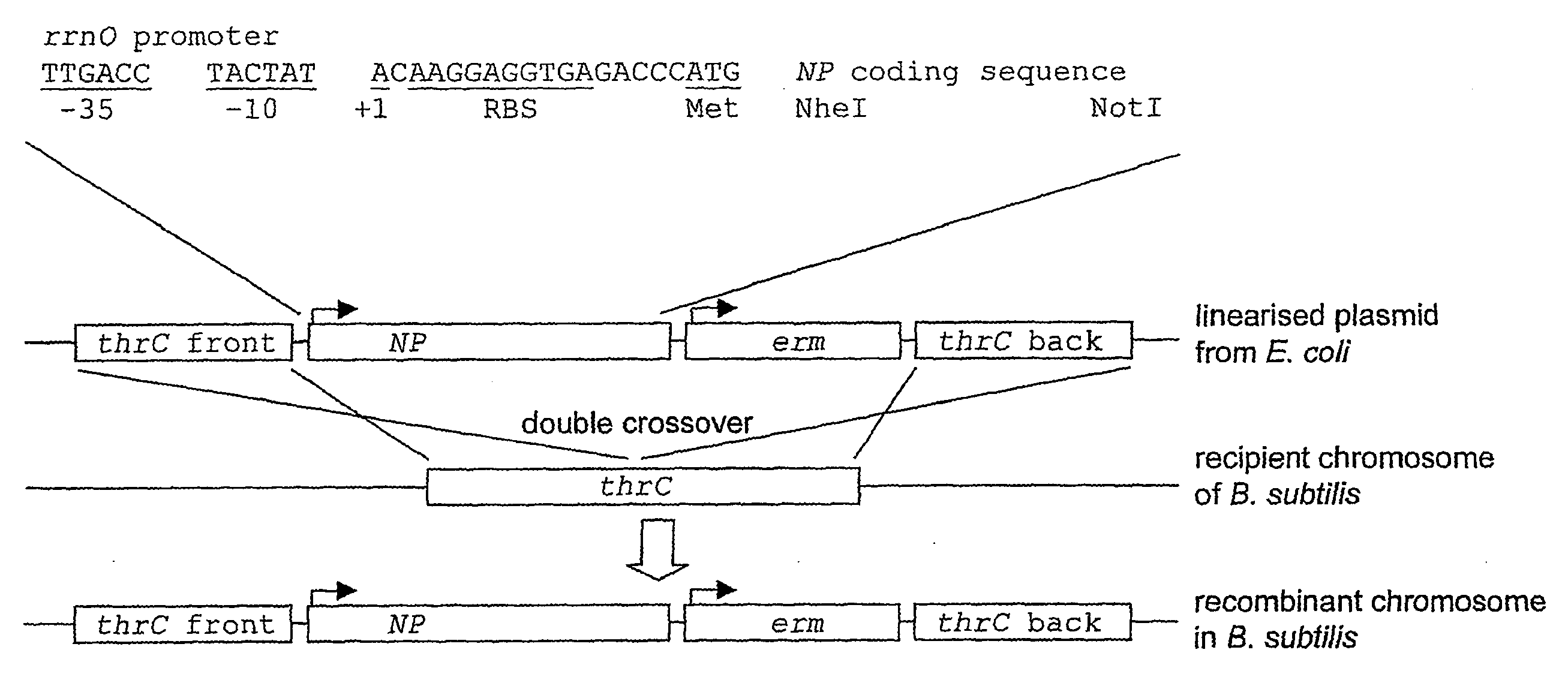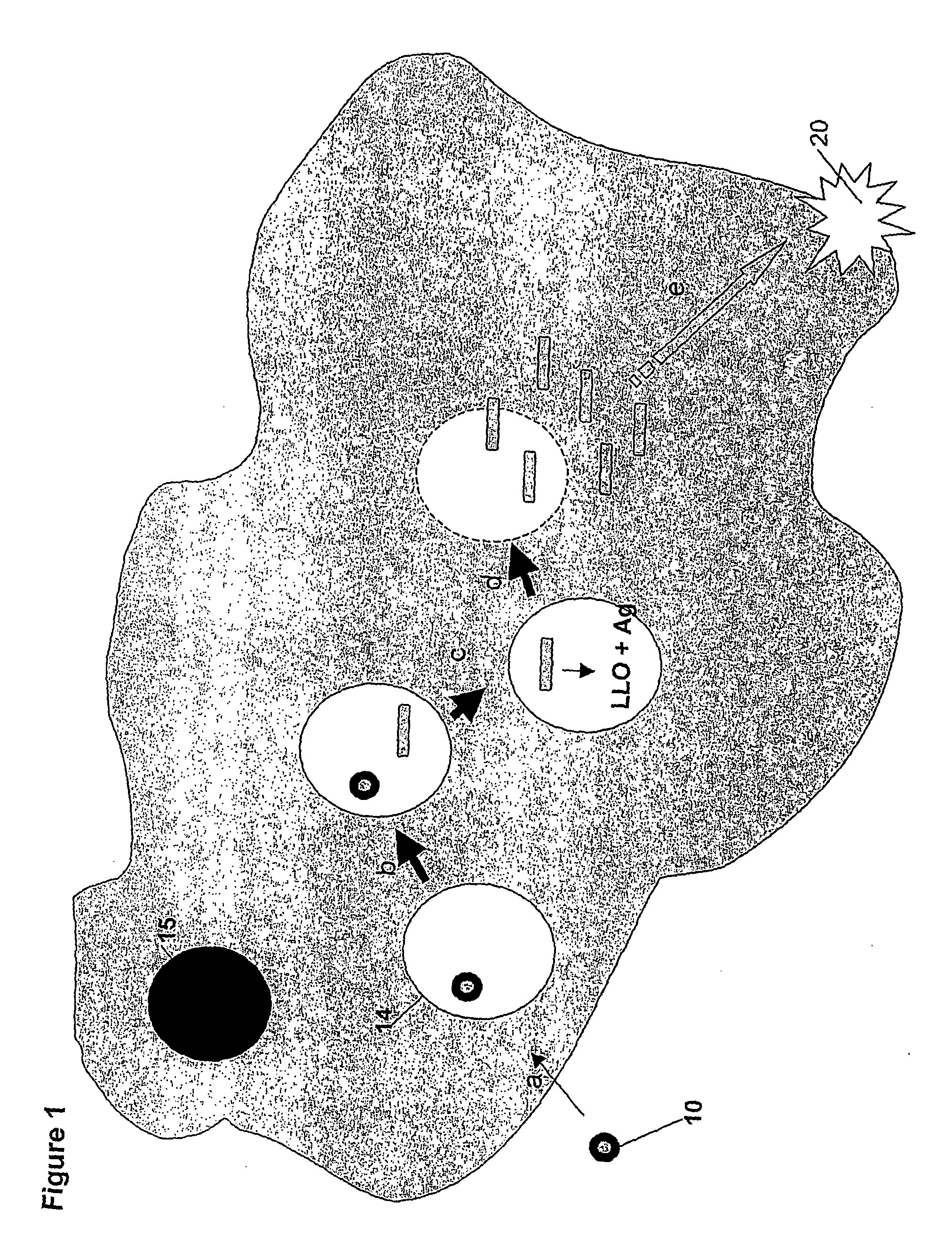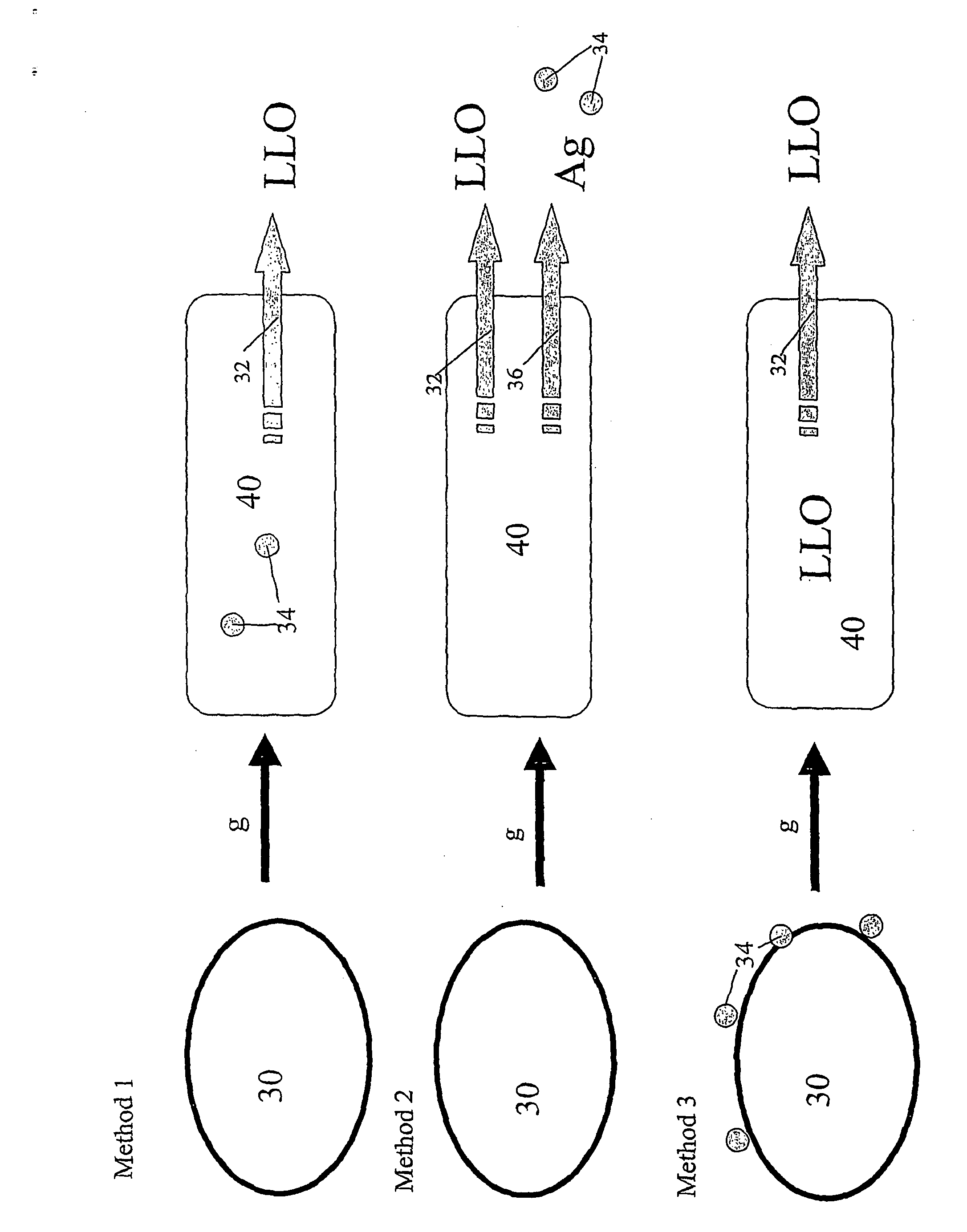Listeriolysin-Containing Bacillus Spores as Antigen Delivery Agents
a technology of bacillus spores and spores, which is applied in the direction of biocide, plant growth regulators, bacteria peptides, etc., can solve the problem of remaining ineffective in controlling some of the most serious diseases
- Summary
- Abstract
- Description
- Claims
- Application Information
AI Technical Summary
Benefits of technology
Problems solved by technology
Method used
Image
Examples
example 1
Expression of LLO in the Vegetative Cell of B. Subtilis
[0231]Recombinant DNA methods were used to fuse hylA sequences which encode LLO (the sequence of which is provided in FIGS. 3 and 4 and also SEQ ID Nos 1 and 2 respectively) to the PrrnO promoter and translational initiation signals carried in pDL242 (FIG. 7A) and pDL243 (FIG. 7B). In each case the PrrnO-LLO expression cassette was inserted at the thrC (FIG. 7A) and amyE (FIG. 7B) loci of B. subtilis by a double crossover recombination. Stable transformants were isolated and shown to express the 58.7 kD LLO protein during vegetative growth.
[0232]FIG. 8 shows LLO expression in cells carrying PrrnO-LLO at the thrC locus grown in LB medium and under vegetative growth. Total cells were harvested by centrifugation after 22 hours of incubation at 22° C. The cell pellet was then extracted in SDS-PAGE buffer and run on an SDS-PAGE gel and western blotted using a polyclonal antibody to detect LLO, LLO was shown to be present in the cell...
example 2
Induction of CTL Responses to β-Galactosidase and Enhancement by Membrane Rupturing Agent
[0234]B. subtilis was engineered to carry two recombinant genes, PrrnO-LLO at the amyE locus using pDL243 (FIG. 7B) and PrrnO-lacZ at the thrC locus using pDL242 (FIG. 9A). Mice were immunized by the oral route with these B. subtilis spores (PrrnO-lacZ+PrrnO-LLO) as well as spores expressing only β-galactosidase (PrrnO-lacZ) (on days 0 / 1 / 2 / 20 / 21 / 22 with 2×1010 spores / dose).
[0235]Spleen cells were isolated on day 45 and maintained for 2 weeks with in vitro stimulation with the β-galactosidase dominant MHC-class I peptide (T9L). Target cell P815 was coated with T9L peptide and incubated with sodium chromate (51Cr) for 90 min, washed then lysed with different ratios of effector:target cells. Release of 51Cr was measured with a gamma counter, and data are presented as the mean value of triplicate samples (FIG. 9B: closed circle—PrrnO-lacZ and PrrnO-LLO; open circle—PrrnO-lacZ only; asterisks—naïve m...
example 3
Induction of CTL Response to Influenza NP and Enhancement by Membrane Rupturing Agent
[0236]B. subtilis was engineered to express LLO and Influenza Nucleoprotein (NP) in the germinating spore or vegetative cell by fusing LLO and NP to the PrrnO-promoters. PrrnO-LLO was carred at the amyE locus using pDL243 (FIG. 7B) and PrrnO-NP at the thrC locus using pDL242 (FIG. 10A). Mice were immunized by the nasal route on days 0 / 1 / 15 / 16 with 2×109 spores / dose route. On day 35 spleens were removed and splenocytes maintained for 2 weeks with in vitro stimulation with the peptide ELRSRYWAI (NP380-388). Target cell B-lymphoblastoid was coated with NP380-388 and incubated with sodium chromate (51Cr) for 90 min, then washed and lysed with different ratios of effector:target cells. Release of 51Cr was measured with a gamma counter. Similar levels of lysis were observed in each of five replicates (FIG. 10B-Open bar, PrrnO-LLO and PrrnO-NP; Black bar, PrrnO-NP only and Striped bar, naïve mice.).
[0237]T...
PUM
| Property | Measurement | Unit |
|---|---|---|
| affinity | aaaaa | aaaaa |
| length | aaaaa | aaaaa |
| heat labile | aaaaa | aaaaa |
Abstract
Description
Claims
Application Information
 Login to View More
Login to View More - R&D
- Intellectual Property
- Life Sciences
- Materials
- Tech Scout
- Unparalleled Data Quality
- Higher Quality Content
- 60% Fewer Hallucinations
Browse by: Latest US Patents, China's latest patents, Technical Efficacy Thesaurus, Application Domain, Technology Topic, Popular Technical Reports.
© 2025 PatSnap. All rights reserved.Legal|Privacy policy|Modern Slavery Act Transparency Statement|Sitemap|About US| Contact US: help@patsnap.com



